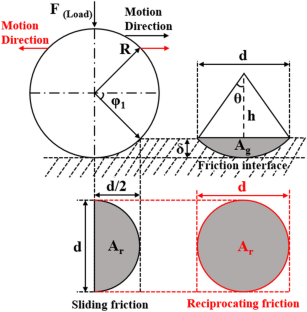Tribological characteristics of WC-Cr3C2-Ni cermet coatings under different wear parameters
Abstract
The wear-resistant cermet coating of WC-Cr3C2-Ni was deposited via high-velocity air–fuel spraying on the beryllium bronze substrate. The wear characteristics of the coatings were investigated under different types and parameters of wear while comparing the effects of various factors on measurement accuracy and visibility. The friction coefficient of the WC-Cr3C2-Ni coating exhibited a lower value in the reciprocating wear experiment compared to that observed in the sliding wear experiment. The mass loss and friction coefficient of the coating increased with the rise in sliding speed and normal load in sliding wear. The wear of the coating is primarily attributed to adhesive wear, with a relatively lower proportion observed in reciprocating wear compared to sliding wear. The proportion of adhesive wear decreased with increasing speed, while it increased with increasing normal load. Moreover, the sensitivity of adhesive wear to normal load surpassed that of sliding speed. The experimental results showed that the tribological properties of WC-Cr3C2-Ni coating can be well demonstrated by both the reciprocating wear test and sliding wear test when the wear parameters of low load and high speed were used. This study will offer theoretical backing for the selection and assessment of polyphase hard coating materials across diverse industries. high-velocity air–fuel (HVAF).


 求助内容:
求助内容: 应助结果提醒方式:
应助结果提醒方式:


